13 Days 12 Nights
Daily Tour
Unlimited
___
Experience the full diversity of Saudi Arabia in one unforgettable 13-day journey. Starting from the coastal charm of Jeddah, this expertly curated tour takes you through the cool highlands of Taif and Al Baha, the cultural richness of Abha, the tropical landscapes of Jazan, and the historical depth of Najran.
Continue your exploration northward to Tabuk, Sakaka, Hail, and the awe-inspiring AlUla, before ending your adventure in the modern capital, Riyadh. Along the way, you’ll encounter UNESCO World Heritage Sites, majestic mountain ranges, ancient villages, rock inscriptions, oases, and vibrant souks.
Perfect for travelers who want to experience the real Saudi Arabia — its landscapes, its stories, and its soul.

Spend the day discovering Jeddah’s UNESCO-listed treasures. Start at the lively Fish Market, a window into daily life by the sea, where fishermen bring in their catch of the day. Continue to the Tayebat Museum stands as one of Jeddah’s most prominent private cultural landmarks, showcasing the depth of Saudi history and the richness of its diverse civilizations, then step into the historic lanes of Al-Balad, where coral-stone houses and carved wooden balconies recall centuries of trade. Visit Souk Al-Alawi, One of the largest markets in Al Balad. Souq Al Alawi is a labyrinth of narrow streets with shops selling a variety of goods, explore Nassif House, is a treasure trove of history nestled in the heart of Al-Balad, the historic district of Jeddah, built during the late 19th century. This iconic museum in Jeddah showcases the city’s rich cultural heritage and a great site for anyone eager to explore Saudi Arabia’s vibrant past. and pause at the ancient Al Shafi’i Mosque, which is one of the oldest mosques in Jeddah, then visiting the striking Floating Mosque. In the evening, admire the world’s tallest King Fahd Fountain and take a leisurely stroll along the Corniche. Overnight in Jeddah
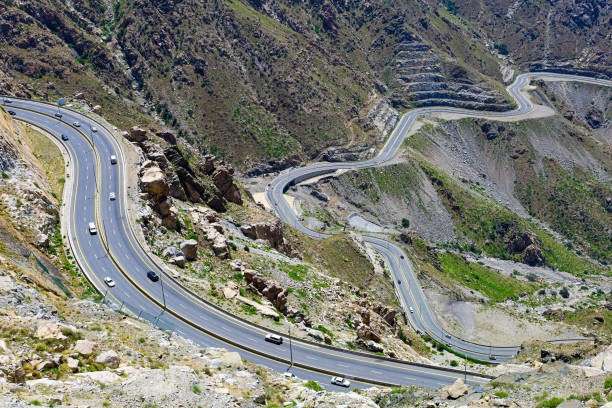
Early departure towrds south, passing through the cool highlands of Taif and onward to Albaha. En route, visit AlAtawlah Heritage Village, which considered one of the most important villages in the Zahran region of Al-Qura Governorate. As visiting it, you can learn about the Saudi civilization, both past and present,Then we will explore Bin Raqoush Palace is one of the archaeological and historical palaces in al-Bahah. It is considered one of the oldest fully serviced historical palaces and has been renovated to become a museum, a tourist center, and a venue for heritage events in the province, continue to Raghadan Forest, is one of Al Baha’s most iconic outdoor destinations, a mountain retreat often draped in mist and embraced by ancient juniper trees, ending our day with Raghadan sunset views. Overnight stay in Albaha.

After breakfast we start our day by perching high above the valley floor in the historic village of Al Malad Castle, this remarkable set of twin structures, known collectively as Al Malad Castle or the Twin Fortresses, stands as one of Al Baha’s most distinctive archaeological landmarks. Then explore the white stone houses of Thee Ain Village, known as the “Marble Village”. Thee Ain Village is a tourist heritage village dating back to the sixteenth century AD. It is surrounded by mountains on all four sides and is located in al-Makhwah Governorate in al-Bahah Province, then continue our way to Abha. Here, visit the Aseer Regional Museum, Located in the city center next to the Emira Palace that was built according to Aseer architectural tradition, Aseer Regional Museum tells the long history of Abha and Aseer Province and exhibits some of the province’s traditional handicrafts, along with antiquities of Aseer Province, continue to Almuftaha Village, a colorful hub for art and culture, . It serves as a cultural center for traditional, visual, and photographic arts, as well as handicrafts and artisanal industries. Finish the day by climb up to Shamsan Castle for sunset view. Overnight in Abha.
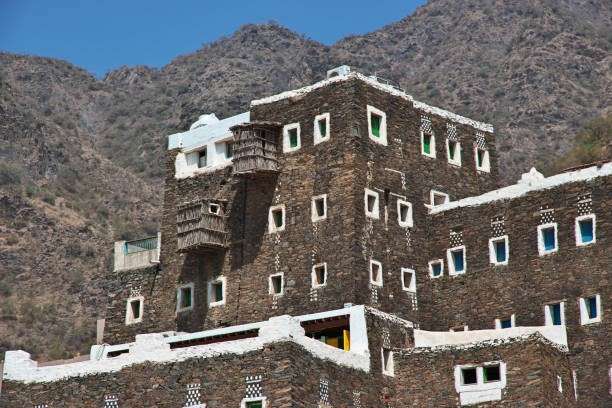
Departure to Jazan city through the mountains. Stop at the Al-Abo Sarrah Palaces, It consists of three palaces in the middle of Al-Aziza village, built by Sheikh / Laheg bin Ahmed Abu Sarrah in 1834, were renovated in 2017 by his grandchildren. These Palaces are of historical and social depth for the Aseer province and are the largest palaces in the region, then ascend Jabal Souda, stands tall as the country’s highest peak, with breathtaking views over the Asir mountains, reaching an impressive elevation of 3,015 meters (9,892 feet) above sea level. Continue our way to striking heritage village of Rijal Almaa, UNESCO World Heritage village, a stunning heritage village with colorful stone houses. The historical significance of Rijal Almaa extends far beyond its architectural splendor. The village once thrived as a vital trading hub, fostering commercial routes between Yemen and the Levant through the holy cities of Mecca and Medina after exploring, we continue to Jazan, in there we will visit The Heritage Village, Coffers a unique blend of history, culture, and artistry, making it a vibrant cultural hub. You can explore traditional houses, including the Jalabi house, which reflects the area’s mountainous architecture and agricultural heritage. Conclude with outside view of Al Dosariyah Castle, an Ottoman-era fort overlooking the Red Sea. Overnight stay in Jazan.
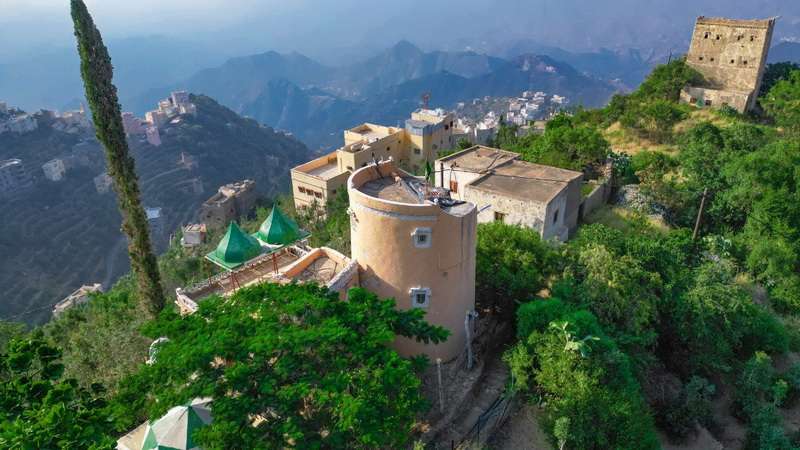
Depart Jazan and drive through the lush, terraced Fayfa Mountains, Winding up to the terraced farms Fayfa the jewel of Jizan Province high in the Arabian skies. With its peaks over 2 600 meters above sea level the Fayfa offers unexpected and stunning scenery over the lush mountains of this massif located just 60 kilometers from the Red Sea. Drive through the dramatic canyon of Wadi Lajab, a famous valley located between two towering Rocky Mountains with steep slopes, then continue to Najran, enjoy the bustling Dagger Souq, the market is famous for selling the Janabiya, which is an Arabic dagger with inscriptions for decoration, and the people of the city use it in weddings and national occasions, as it is considered part of their traditions. Overnight stay in Najran.

Spend the morning exploring Najran, starting by visiting the Emirate Palace, , providing an idea of the architectural fabric of the mud houses in Najran, and serving as an inspiring cultural framework for visitors and tourists, and acting as a bridge of communication between generations. Then explore the Al-Aan Palace which is characterized by a traditional style that reflects the architectural identity of the region in previous periods. This is evident when one observes its exterior form and the white decorations that adorn its edges, and Ra’um Castle. The castle, built from stone, still retains its distinctive features. Visitors can climb up via a stone staircase, making it an attractive site for history enthusiasts and mountain climbers alike. also we will discover the ruins of Al-Ukhdood, dating back thousands of years, after lunch we drive to Najran airport fly to Tabuk to overnight.
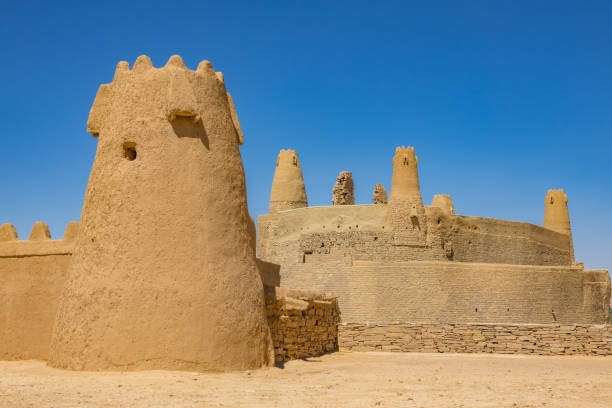
Before departing Tabuk we will visit Tabuk Castle, a heritage castle located in Tabuk City, Historically, it was one of the stations on the Levant Hajj Route, which connected the Levant with Medinaa holy city. The route consisted of castles and stations to receive pilgrims. Next will be Al-Tawbah Mosque, the mosque is considered a very important landmark in the Tabuk region, and continue to the Hejaz Railway Station was built almost a century ago to take Muslim pilgrims from Damascus to the holy cities of Makkah and Medina but ended in ruins less than two decades after its start. It has become a famous tourist attraction and was recently declared a UNESCO world heritage site in Tabuk, here we will departe Tabuk to Dumat Al-Jandal. Visit Marid Castle, is a historic heritage castle, and a cultural landmark in Dawmat al-Jandal Governorate. It consists of numerous buildings, forts, bastions, and watchtowers dating back to the first and second centuries, making it one of the oldest archaeological sites in the Kingdom, the Mosque of Umar, This mosque is one of the most important historic mosques in the Kingdom of Saudi Arabia, as it is a great model of the first mosques in Islam such as the Prophet's Mosque. Visit Dumat Al Jandal Lake, is located in the desert, as it was created by the flow of irrigation water that began in 1987. It is an artificial lake and considered as the largest lake in Arabian Peninsula and is a very popular destination among the locals, continue Sakaka for overnight .
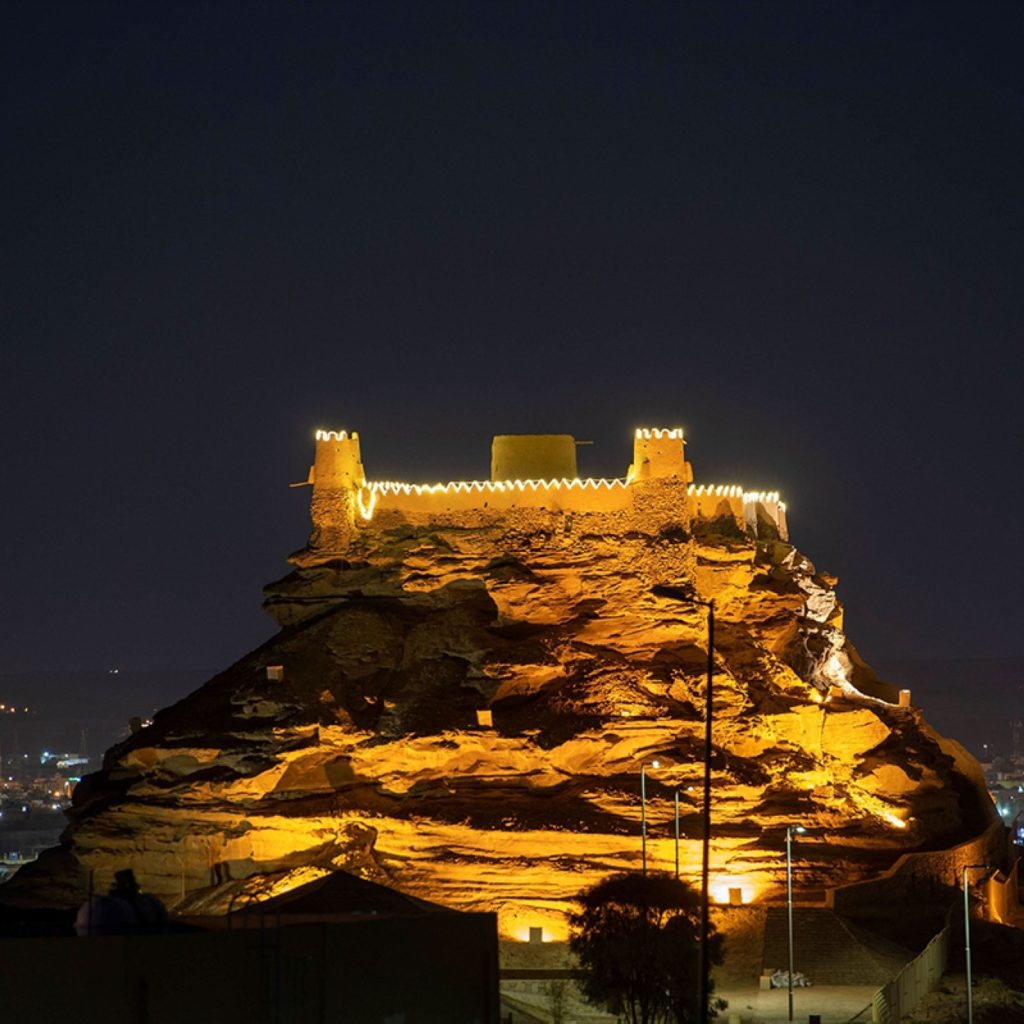
Visit Sisera Well, is located in the northern end of the city about 200 metres from Za’abal Castle and dates back to the Nabataean Period (First century BC until the end of the first century AD). The well is dug in sandstone, is oval in shape, Then explore Za'abal Castle, sitting on top of a mountain in the northwest corner of Saudi Arabia is a mud and stone structure known as Za'abal Castle (or Zaabal Fort, Zaabal Palace). But it's more than just a fortress, it sits on top of a well system that has run throughout the city of Sakakah for centuries, Explore Al-Qadeer Palace, is one of the ancient palaces in Sakaka City in al-Jawf Province, includes the remains of a fortress built from sandstone and mud, consisting of a room and a watchtower, see the mysterious Rajajel Columns, The Columns of Rajajil is an archaeological site in al-Jawf Province, then depart Sakaka towards Jubbah where millennia-old rock art at Umm Sinman (UNESCO) reveals Arabia’s ancient past. Jubbah is distinguished by several archaeological sites that showcase early styles of carving and engraving. The phenomenon of rock art has emerged throughout human history. Overnight in Hail.

Morning visits to Qashla Castle, It was constructed during the rule of the Founding King Abdulaziz Bin Abdulrahman Al Saud in 1941. See the A'arif Fort, is the oldest historical building in the city of Hail. During the Saudi rule, the Fort was used for the sighting of the moon and firing the Iftaar cannon in Ramadan. The Hail Regional Museum, whose identity is influenced by the Hail urban and heritage identity, is home to antiquities and its other historical items from the governorate, continue to Al-Ha'it once a historic stronghold, visiting Fadk Historical village (Al-Ha'it) is located on a plateau covered with volcanic stones, which, when removed, reveal fertile agricultural soil underneath. Fadak is its ancient name and is currently called Al-Ha'it. In recent centuries, its name changed from Fadak to Al-Ha'it due to the wall that surrounds it on all sides. Continue to AlUla. Overnight stay in AlUla.
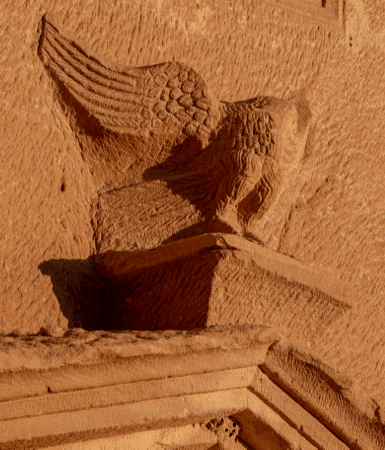
Explore the Hegra (UNESCO World Heritage Site) Hegra or Hijr is a World Heritage Site and a Saudi touristic and historic monument. It is located in AlUla governorate, affiliated with Madinah, northwest of the Kingdom of Saudi Arabia. Hegra, which was known for a long time as Mada’in Salih, consists of ruins that have combined various historical eras, including Nabataean, Lihyanite, and Islamic. Its most famous landmarks are the historical tombs carved on the facades of sandstone rocks. Explore Lion Tombs of Dadan, nestled within the breathtaking landscapes of AlUla, Saudi Arabia, Dadan is an archaeological treasure that offers visitors a glimpse into the rich history and culture of ancient civilizations. From its intricately carved Lion Tombs to its strategic role in ancient trade routes, Dadan promises a captivating journey through time. End the day at the iconic Elephant Rock, The Elephant Rock (Jabal AlFil) is one of the world’s most popular rocks formations and the highlight of the region of Al Ula, it is also one of the geological wonders of al-Ula and a tourist attraction Visiting the rock at night is advantageous to avoid the hot weather during the day, with sunken sofa areas and the option to light a fire; you can sit and enjoy the music, coffee, and mountains. End at the Elephant Rock before your evening flight to Riyadh. Overnight in Riyadh.
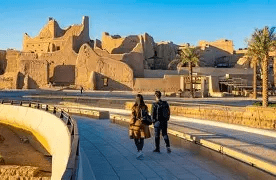
Our day begins with a journey into the heart of old Riyadh. Wander the narrow lanes of AlDirah Neighborhood, featuring a number of houses, mosques, streets, and squares built according to the urban style of the city. Shop at Souk Al-Zal, is one of Riyadh’s oldest markets, known for its variety of antiques, carpets, vintage items, and traditional goods. Next, step into history at Al Masmak Palace, the mud-brick fortress tied to the kingdom’s unification. Afterwards, immerse yourself in the cultural treasures of the Saudi National Museum, a world-class showcase of Arabia’s history, Islam, and heritage. Then visit the elegant Murabba Palace, was the first palace built for King Abdulaziz Bin Abdulrahman Al Saud, the Founder of the Kingdom of Saudi Arabia.
As the day winds down, head out to Diriyah’s At-Turaif District, a UNESCO World Heritage Site and the birthplace of the first Saudi state, was the first capital of the Saudi Dynasty. Founded in the 15th century, it bears witness to the Najdi architectural style. Finally, shift into Riyadh’s modern skyline with the striking the futuristic Kingdom Tower, famous for its sky bridge. Overnight in Riyadh.
Most travelers require a visa. You can apply for a tourist eVisa online, which is available for citizens of many countries.
Yes, Saudi Arabia is generally safe for tourists. Follow local laws and customs, and stay aware of your surroundings.
Modest clothing is recommended. Women are not required to wear an abaya but should dress conservatively. Men should avoid sleeveless tops and shorts in public.
Major credit cards are widely accepted, especially in cities. However, it's good to carry some cash for small shops and rural areas.
No. The sale, purchase, and consumption of alcohol are strictly prohibited.
Arabic is the official language. English is commonly spoken in tourist areas, hotels, and by younger generations.
The currency is Saudi Riyal (SAR). ATMs are widely available.
Yes. As of recent regulations, unmarried foreign couples are allowed to stay in the same hotel room.
You can take photos of landscapes and tourist attractions, but avoid photographing government buildings or locals without permission.
October to March is ideal due to cooler weather, especially for outdoor activities and sightseeing.
Leave a review